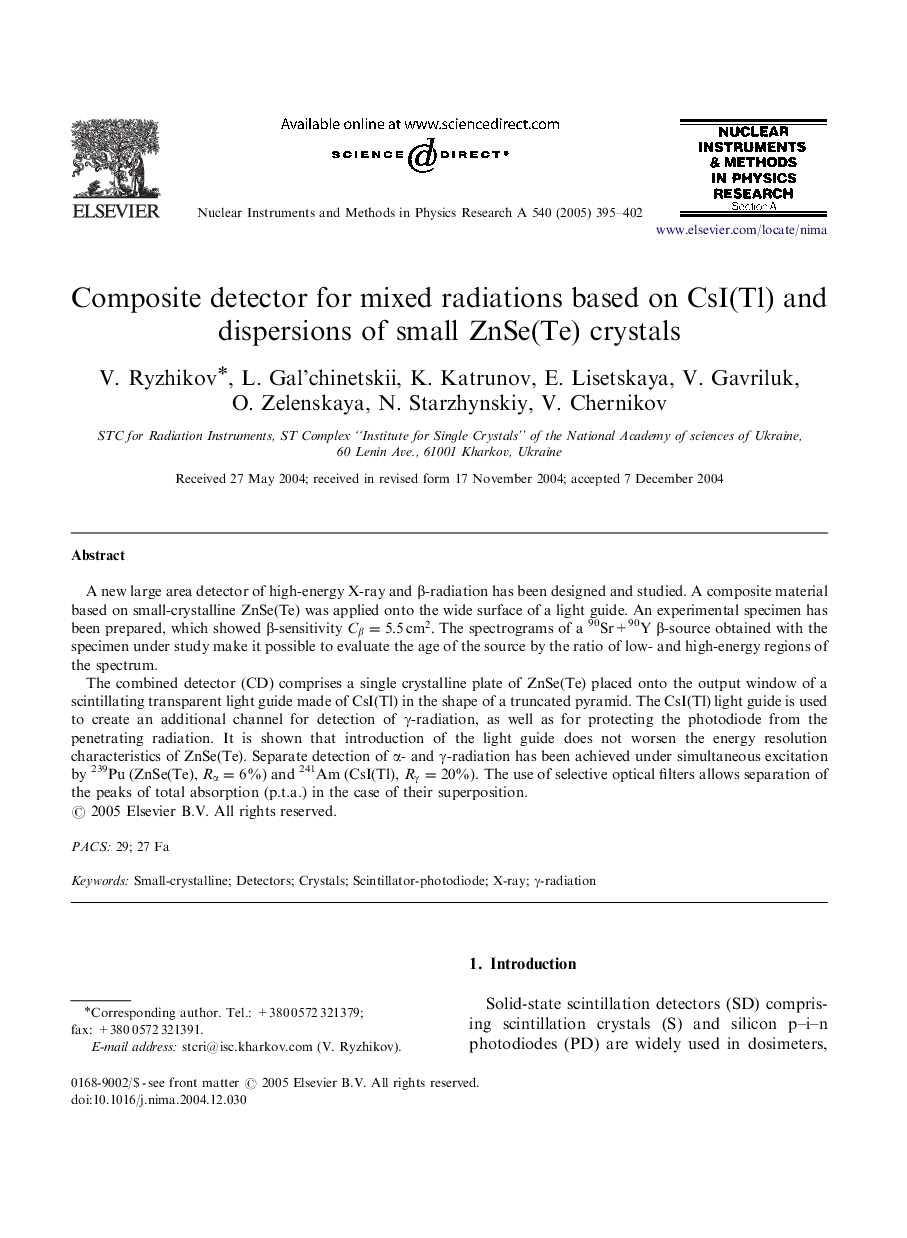| Article ID | Journal | Published Year | Pages | File Type |
|---|---|---|---|---|
| 9845697 | Nuclear Instruments and Methods in Physics Research Section A: Accelerators, Spectrometers, Detectors and Associated Equipment | 2005 | 8 Pages |
Abstract
The combined detector (CD) comprises a single crystalline plate of ZnSe(Te) placed onto the output window of a scintillating transparent light guide made of CsI(Tl) in the shape of a truncated pyramid. The CsI(Tl) light guide is used to create an additional channel for detection of γ-radiation, as well as for protecting the photodiode from the penetrating radiation. It is shown that introduction of the light guide does not worsen the energy resolution characteristics of ZnSe(Te). Separate detection of α- and γ-radiation has been achieved under simultaneous excitation by 239Pu (ZnSe(Te), Rα=6%) and 241Am (CsI(Tl), Rγ=20%). The use of selective optical filters allows separation of the peaks of total absorption (p.t.a.) in the case of their superposition.
Keywords
Related Topics
Physical Sciences and Engineering
Physics and Astronomy
Instrumentation
Authors
V. Ryzhikov, L. Gal'chinetskii, K. Katrunov, E. Lisetskaya, V. Gavriluk, O. Zelenskaya, N. Starzhynskiy, V. Chernikov,
